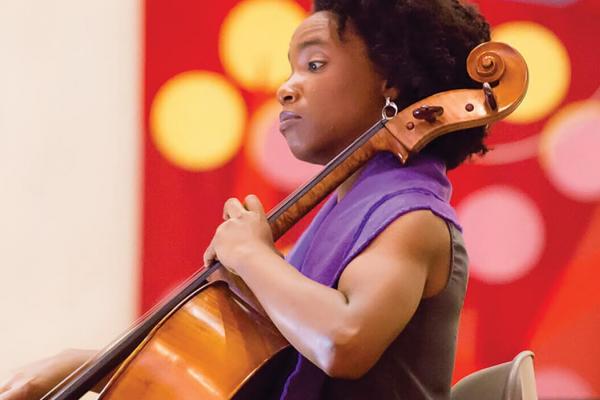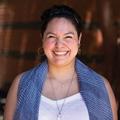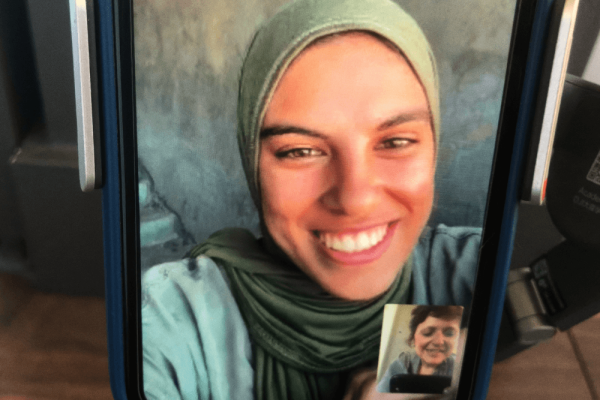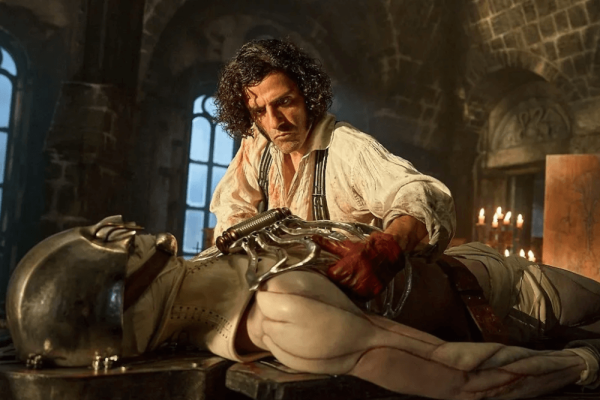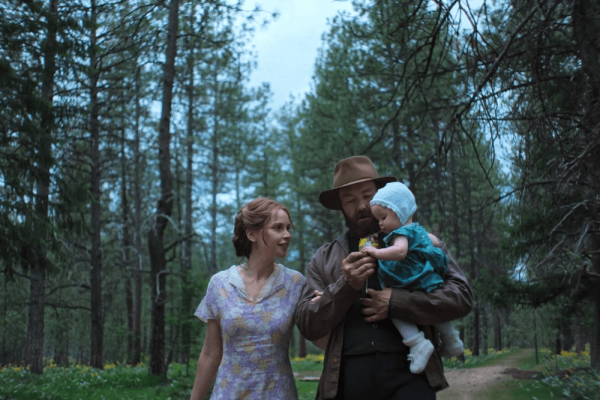WHEN TERESA P. MATEUS attended gatherings on Christian contemplative spirituality, she often didn’t see herself reflected in the spiritual practices “centered in whiteness” that she found emphasized there. She yearned for spiritual resources that drew on the experiences of people of color—and out of that yearning, the Mystic Soul Project was born.
Mateus is a graduate of the New York University School of Clinical Social Work and the Living School at the Center for Action and Contemplation and author (under the name Teresa B. Pasquale) of two books on recovery after trauma, including Sacred Wounds: A Path to Healing from Spiritual Trauma. Da’Shawn Mosley, assistant editor of Sojourners, spoke with Mateus in August about how the Mystic Soul Project brings healing and spiritual nourishment to people on the margins.
Da’Shawn Mosley: Tell us about the Mystic Soul Project.
Teresa P. Mateus: Our basic mission is activism, mysticism, and healing centered around the life experiences of people of color. We create space for conversations, relationship building, practices, and other programming that have a people-of-color perspective and allow many to reclaim ancestral practices that have been abandoned or erased by Western traditions.
How did the project get started? The Mystic Soul Project was born from my deep yearning for a contemplative life into which I could integrate my identity as a person of color. I wondered how healing is inherent in our spirituality and how the action and activism that people of color do is grounded in their spirituality and healing, and I wanted space to explore those questions.
But gatherings on Christian contemplative spirituality are dominated by white, wealthy people who are baby boomers or older. That doesn’t represent all the people yearning for contemplative spirituality. In speaking with other people of color, I realized that my deep yearning was more universal than I thought, because it’s difficult to worship in dominant white spaces with spiritual practices centered in whiteness.
I thought about what people of color need from a conference. I realized that we go to a lot of places that help us with our brand, give us information, and train us and equip us to do things. But what would it be like to go to a conference that is mostly about nurturing and pouring into our soul? I thought about this and got to work with others to make the vision a reality. Since we have few examples of what it looks like to decolonize and deconstruct societal paradigms that overlook people of color, I spent a long time trying to figure out how to do that.
What shaped your vision for these gatherings? Some of the inspiration and permission to be focused on people of color and Indigenous traditions—in all of the meanings of “Indigenous”—came from the week I spent doing trauma care at Standing Rock. That environment was so crafted and curated as being unapologetically Lakota, unapologetically Indigenous, and adamant that marginalized voices would be heard and the call on people who weren’t marginalized was to be quiet.
I had never been in a space where people did that firmly, but with love. And so, for me, that became something I wanted to do at our gatherings.
So everyone who facilitated any piece of programming was a person of color. We had both a person-of-color and a non-person-of-color spirit-care team to provide attendees spiritual direction. We had a creative arts space that was all about projects that allowed people to express themselves, their identity, and their wholeness, and we also had programming, from morning to night each day, that focused on embodied healing: acupuncture, Reiki, and massage.
For our workshops, we had a rule of life, a tenet of co-teaching and co-learning. We believe there’s not one person who has all the wisdom, but rather we’re all carrying individual wisdom: How do we combine that knowledge and share it with each other?
At the conference, we also had a contemplative practice space, in which we did guided meditations and allowed time for people to just sit and be. We also held conversations, for people who are external processors and wanted that space.
But most of the conference was dedicated to nurturing the parts of ourselves—this especially pertains to people of color—that we forget to take care of.
How were the attendees chosen? We had a six-month application process, wanting to make sure that we were inviting people who were ready for what we wanted to do, because we intentionally wanted to deconstruct and decolonize paradigms of power and reorganize them to prioritize people of color.
We received 425 applications. I read every single one and realized that the application itself was having a profound effect on people, many of them saying things like, “Just finding this website and knowing that this conference is going to happen is the thing I’ve been waiting for my whole life.” Even people as far away as New Zealand and Canada expressed that sentiment.
At the conference, elders—elders of color—said to me, “I have wanted a space like this to exist for so long.” That was amazing to hear, that we were providing space for people to allow all the parts of their self to come together and not be suppressed.
What obstacles have stood in the way of the Mystic Soul Project’s growth? Because of our focus on spirituality, activism, and healing, rather than just one of those areas, we connect to a multitude of spaces, but don’t fit into any one of their quintessential boxes. That makes funding more difficult than if we were of a specific denomination, faith practice, or kind of activism.
Healing fits in the funding box for mental health, but because we’re not providing exact, in-person counseling services, we don’t necessarily fit into that box. And grants for activism are usually given based on what your campaign is, what your target is. There’s not a widespread awareness yet that healing in movements is just as necessary as what the movements themselves are doing.
Also, the idea of reconnecting to traditions of your ancestry and letting go of Western traditions is fairly new. Many people are unaware that Western Christianity’s initial function was demonizing practices that were ancestral to people of color—colonizing faith. They don’t know that sometimes when they talk about decolonizing spaces and deconstructing white supremacy in the context of their Christian faith, their language is still language of colonization and still demonizes ancestral practices. Revealing that to people, so they will want to invest in deep examination of ancestral practices, is a lot of work.
How does the Mystic Soul Project address intersectionality? Trying to center the lives and ancestry of people who have been decentered and marginalized in multiple ways is maybe the hardest thing I’ve ever tried to do. In attempting this, my fellow organizers and I didn’t get everything right. When you’re trying to lift, create space for, and have sensitivities around people’s diverse identities, there’s constantly room to improve.
When we asked people to attend the conference, we made it clear that, besides being centered on people of color, we are also spiritually inclusive. We recognize the abundance of spiritual identities and encouraged attendees to not make assumptions that everyone else was Christian just because several Christians they recognized were in attendance. Whenever I mentioned God, I said, “The divine force that I call God,” because that may not be indicative of other people’s spirituality. The balance is being authentic to each of our specific traditions while also being invitational.
In addition to being multireligious, the Mystic Soul Project is also queer- and trans-inclusive and inclusive of the disability community. Before anyone arrived at the [January] conference, we were intent on addressing accessibility issues and making the bathrooms gender-neutral.
There’s no space I can think of that prioritizes and lifts all those identities. There are places that are people-of-color centered but aren’t purposefully queer- and trans-inclusive, and there are spaces that are queer- and trans-inclusive but there are barely any people of color involved with the space.
At least half of our board is queer. At the conference, we gave queer and trans people the floor to speak. To make sure that conference attendees were sensitized to gender identity, the name badges we provided them allowed them to select the gendered or gender-neutral pronouns they identified with and write down an alternative designation.
But despite all that, we have farther to go in our inclusion. There are lots of parts we need to expand to make the space inherently and authentically intersectional, not just an idea of intersectionality but rather lived and breathed.
What’s ahead for the project? We’ve started a podcast and a virtual teaching series—a web series of various teachings but also conversations. We also want to build smaller community groups around the country, creating space for people to have dialogues about different ways of healing, spiritual connection, and activism and bring those things together in a people-of-color-centered way. Our next conference, in June 2019, will be space for people to meet face-to-face—wisdom is in community, the history, personhood, and fullness of everyone who shows up.
The night before our January gathering, we had an advance party in a school we were using as space for the conference; we called it “Mystic Soul Prom.” It was just everyone dancing, having the prom they never got to have as themselves, in all their fullness.
Watching all these people of color dancing, having a 100-percent moment of joy, I thought, “This is it. This community is born.” The community always existed, but its members just needed to find each other.
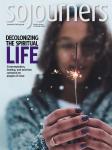
Got something to say about what you're reading? We value your feedback!
